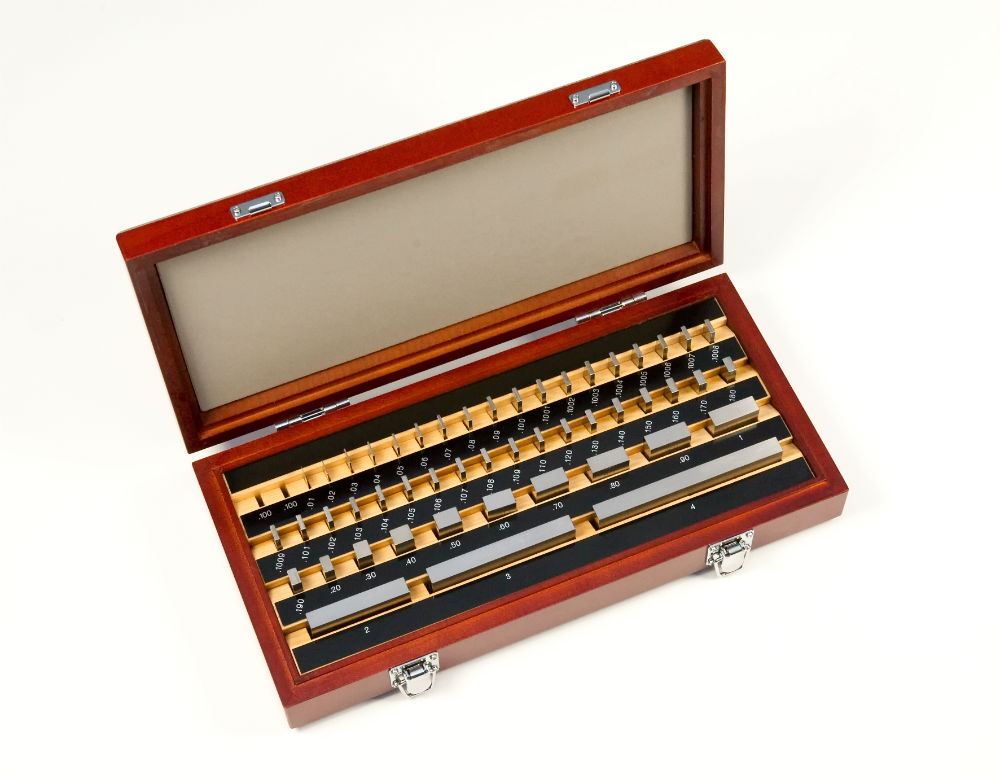Last time we talked about a wonderful little tool, gage blocks. We also explained gage block grades to you, what they mean, and why they are important for precision measurement. Well, one detail we left out is discussing the importance of what material gage blocks are made from. Each type of material comes with advantages and disadvantages. We are going to focus our attention on choosing between ceramic or steel gage blocks, and explaining both the advantages and disadvantages of using both.
Steel is the most common material for gage blocks. A naturally hard material, steel is beneficial as a gage block material because it can withstand normal usage as well as hold up well during the lapping process. Lapping is a form of grinding during which an abrasive material is used to smooth out the surface of the gage block, making it more precise and well-suited to wringing. Another advantage of steel gage blocks is that the material is able to match that of the industrial products it is used to measure. Seeing as many industrial machines and products are also made of steel, steel gage blocks will easily be matched to the thermal expansion coefficient of the products they are gaging. This makes accurate measurements much easier to obtain without the use of a thermometer. The major disadvantage of steel gage blocks is that steel is not the most stable material over time. Great leaps in advancement have been made over the past few decades, creating much more stable steels, but changes in length of steel gage blocks and corrosion over time does continue to be a fault to consider. In general, steel gage blocks will be low in initial and replacement costs, adapt well to environmental temperature changes, and match common materials used in larger measurements.
While slightly less common, ceramic is another very popular material for the production of gage blocks. Ceramic has the unique benefit of having a thermal expansion coefficient of almost zero. What this means is that ceramic gage blocks will have minimal alteration in size no matter the changes in surrounding temperature. Additionally, ceramic gage blocks have a zero phase shift. Phase shift is a particular shifting of reflected light dependent upon the surface of a material. Both of these qualities make ceramic ideal for taking highly precise gage measurements. In terms of disadvantages, ceramic gage blocks are much softer than steel gage blocks and run the risk of chipping or cracking if dropped or hit. While they are more easily damaged than steel ones, ceramic gage blocks do not run the risk of expansion or corrosion over time and are therefore more stable. In general, ceramic gage blocks are extremely resistant to scratching, will not corrode in the context of humidity or other corrosive environments, and are easily wrung together.
Choosing the material for your gage blocks is an important part of the precision measurement process. While it may come down to simple preference, there are different reasons to choose steel or ceramic gage blocks, and you might even find it beneficial to own a set of each. No matter what your gage blocks are made of, you will want to consider the wear resistance, dimensional stability, surface finish, and accuracy of each material you consider. Steel gage blocks are extremely accurate, hard and resistant to damage, as well as similar in construction to many of the instruments you will be measuring. Steel blocks are great for shop environments. Ceramic gage blocks will not corrode or wear overtime, and are protected against temperature and phase changes. Consider what priorities you have for both utilizing and maintaining your set of gage blocks, as this will help you to weigh the advantages and disadvantages of both steel and ceramic gage blocks.

